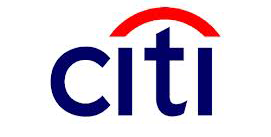Citi’s multi-asset active allocation solution, developed in partnership with BlackRock as allocation provider and distributed so far in Asia via a third party private bank and retail aggregator, is gaining traction as demand for QIS and active management increases.
Sponsored by:
Citi has entered chapter 2 of its cooperation with BlackRock with the launch of a call option certificate (warrant) linked to the Citi Multi Asset Active Allocation VT 4.5 Index (CIXBMAB5 index or MA3 index).
With absolute rates at low levels, the structuring of funded solutions does not work anymore, according to Jennifer Wong (pictured), Citi’s head of private banking sales Apac.
The interesting feature of the new product is that with the MA3 Index it incorporates pure performance [beta] on the underlying - Jennifer Wong
“We have seen clients evolving, splitting cash investments on the one hand and yield generation on the other. Retail clients were traditionally very reluctant to pay a premium to buy an option but the trend had been shifting a few years ago and accelerated in the past 18 months with billions of notional transacted - more retail investors in the region are beginning to accept the idea of trading warrant certificates for different investment needs, for example upside participation, hedging and outperformance/dispersion. As long as the warrant’s premium remains below [2-3]% pa, they're happy to pay,” she said.
“Most warrants are offered as stand-alone with outperformance [alpha] on the underlying. The interesting feature of the new product is that with the MA3 Index it incorporates pure performance [beta] on the underlying.”
The product currently offered by a third party private bank in Asia offers exposure to the MA3 Index through a Citi certificate with a simple call option payoff - unfunded format - that pays at maturity the performance of the underlying index. The new structure is viewed as a complement to more traditional fully funded investments in mutual funds, equities, bonds or structured products. Launched in Q1 21 initially as cash extraction on fully funded protected notes traded in Q1 20 on the MA3 index, the warrant trade has become very popular.
The need for active allocation
In the current market environment, it certainly makes sense to position yourself on strategies that can extract value with granularity (ie not positioned solely on government bonds and usual-suspects equity benchmarks), remarks Médéric Gehl (below right), Citi’s head of delta one and retail solutions Apac.
“A lot of the trades that private banking clients do in Asia end up being short-term, equity-linked and designed to express tactical views on single stocks. With that in mind the new product brings something different, especially the discretionary dimension,” he says.
“Our clients want someone to be in the ‘driving seat,’ who makes allocation decisions. This need for active management in distribution products can be seen via the rise of actively managed certificates [AMCs] which position the distributor [AM, DPM] in this driving seat. An alternative is of course to position a third party asset manager in this driving seat.”
In such a set-up, the investment bank offers the infrastructure both at the index level (platform to access to the underlying building blocks, execute rebalancing, oversee dividend and corporate actions handling, monitor performance…) and at the wrapper/payoff level (delta1 certificate, warrant…), according to Gehl.
Index solution
The Citi Multi Asset Active Allocation Index has been developed using BlackRock’s Model Portfolio allocation advisory service and model portfolio capabilities. The strategy, which has a risk profile of around three to six percent (as opposed to a target income objective), aims at maximising returns by allocating exposure to three different buckets - fixed income, equity and non-traditional assets. Fixed income represents between 70% and 90%, equity between 10% and 30% and non-traditional assets like gold and inflation-linked bonds around 10%. The allocation methodology results from a combination of quantitative and discretionary management.
“Since the launch of the index, and into the beginning of 2020, we have been cautiously risk-on with an allocation to equity of approximately 20%,” says Robert Ronneberger, Asia lead strategist for model portfolios at BlackRock. “With the off-cycle rebalance in April, which was triggered by the Covid-19 sell-off, our assessment of the market turned more positive towards risky assets.”
BlackRock gradually increased the overall allocation to equity towards the end of the year. Within that allocation, it reduced its exposure to US minimum volatility from six percent in Q2 to 1.5%, and shifted from DM into EM equity, increasing it from 1.5% in Q1 to almost five percent in Q4. Similarly, on the fixed income side, the allocation slowly rotated into credit and high yield, the latter reaching six percent at year-end.
Diversified asset allocation across multiple asset classes and geographies is key to take advantage of global recovery - Médéric Gehl
“Of course, there were some trades that didn’t work out so well including our positioning on the shorter end of the US Treasury curve when yields dropped to an all-time-low, taking the market by surprise,” says Ronneberger. “Also, an underweight to the UK and the broader European region – which performed particularly strong on the back of positive vaccine news.”
BlackRock’s global model business has had a very strong year in 2020 with AUM growing from US$60B at the end of 2019 to US$140B by December of 2020.
“The innovative part is that the strategy is run with discretion,” says Gehl. “You have a manager who is actively involved in managing the portfolio. On the one hand, this portfolio leverages the quantitative tools that BlackRock has developed to optimise allocation.
“On the other, there is a team of portfolio managers behind the tools and overseeing any decision – the perfect combination of man and machine.”
In 2020, the combined quantitative/discretionary management was proven to be extremely valuable - usually portfolio rebalancing is articulated around one quarterly scheduled rebalancing and off-cycle rebalancing when appropriate.
“Observing 2020, the index delivered an amazing +8.25% yield,” says Gehl. “Of course, it struggled in March 2020 giving back roughly four percent, but it was very reactive to recover from March lows within less than three to four months, and then further adding extra four percent performance - BlackRock’s discretionary management has been instrumental to drive the index.”
Flashback
BlackRock’s Conservative Model Portfolio has delivered a consistent performance since it was launched in 2014. With the market crash unfolded by Covid in 2020, the strategy has demonstrated its ability to navigate throughout the crisis, adjusting the portfolio allocation to minimise market drops and also capturing rebounds.
Citi’s Gehl recalls that the strategy came to light back at the end of 2019 because of the collaboration between the US investment bank and the world’s largest asset manager.
“The strategy was built on the back of simple observations, assessing client needs and demand for a multi asset universe to capture opportunities, granularity in building blocks to express specific views, full transparency in portfolio composition at any point of time and most importantly the need for someone in the driving seat with discretion in allocation decisions to be reactive,” he says.
The Multi Asset Active Allocation VT 4.5 Index (CIXBMAB5 Index) was first launched on 9 December 2019 and originally accessed via a fixed income-like structure offering full capital protection and an annual coupon equal to the annualised performance of the index.
“The index basically provides the best of two worlds: portfolio management and systematic strategy,” concludes Gehl. “Indeed, it combines quantitative management - adaptive set of signals ranging from traditional valuation-based signals to innovative sentiment-based signals, with active management - discretionary intervention from portfolio managers.
“In the current environment of markets at all time high and fears over inflation, diversified asset allocation across multiple asset classes and geographies is key to take advantage of global recovery, and even more powerful when combined with active management to help navigate through pockets of opportunities.”




